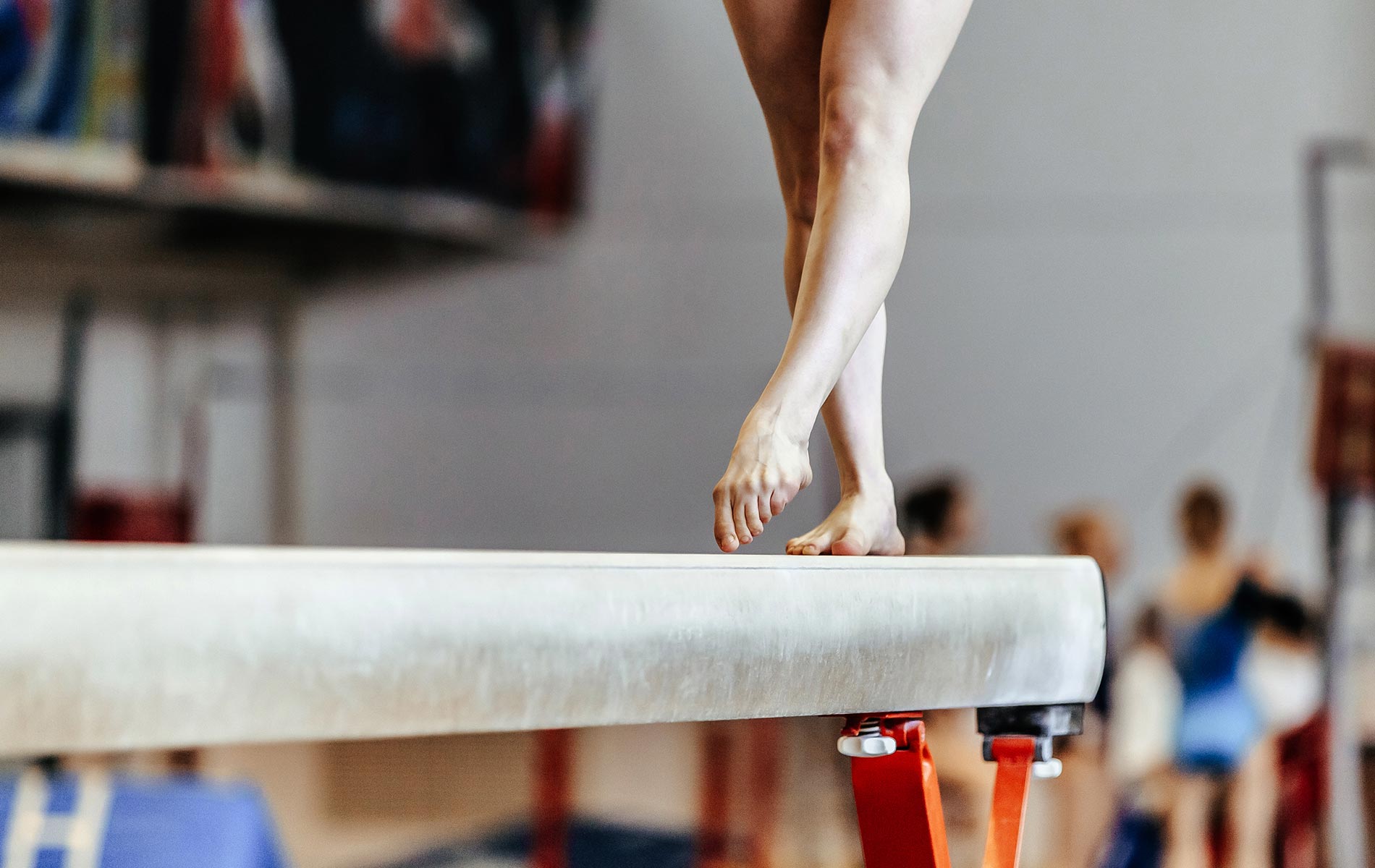Types of Gymnastics Injuries

Gymnastics is a demanding sport that requires high levels of flexibility, strength, and coordination. As a result, gymnasts are at risk for a variety of injuries. The most common types of gymnastics injuries include:
- Acute injuries are those that occur suddenly, often as a result of a fall or other traumatic event. Common acute injuries in gymnastics include sprains, strains, fractures, and dislocations.
- Chronic injuries are those that develop over time, often as a result of repetitive stress. Common chronic injuries in gymnastics include tendinitis, bursitis, and stress fractures.
The specific body parts that are most commonly affected by gymnastics injuries include:
- Ankles
- Knees
- Shoulders
- Elbows
- Wrists
- Back
- Neck
Gymnastics injuries can be prevented by following proper training techniques, warming up properly before each workout, and using proper equipment. It is also important for gymnasts to listen to their bodies and rest when they are feeling pain.
The relentless pursuit of perfection in gymnastics often comes at a price. Injuries, both acute and chronic, are an unfortunate reality for these athletes. While the US Olympic Trials showcased the extraordinary talents of our gymnasts, it also highlighted the physical toll this demanding sport can take.
The rigorous training and high-impact maneuvers put immense stress on their bodies, leading to a wide range of musculoskeletal issues.
Causes and Risk Factors of Gymnastics Injuries

Gymnastics is a physically demanding sport that requires a combination of strength, flexibility, coordination, and power. These demands can put gymnasts at risk for a variety of injuries.
The biomechanics of gymnastics involve repetitive movements that stress the joints, muscles, and tendons. These movements can cause microtrauma, which is small tears in the tissues that can eventually lead to more serious injuries.
Training Intensity and Technique, Gymnastics injuries
The intensity and duration of training can also contribute to injury risk. Gymnasts who train for long hours or with high intensity are more likely to experience injuries. Improper technique can also increase the risk of injury.
Equipment
The equipment used in gymnastics can also contribute to injury risk. Uneven bars, balance beams, and vaulting tables can all be hazardous if not used properly.
Age, Gender, and Previous Injuries
Age, gender, and previous injuries can also affect the risk of gymnastics injuries. Younger gymnasts are more likely to experience growth plate injuries, while older gymnasts are more likely to experience overuse injuries.
Female gymnasts are more likely to experience certain injuries, such as anterior cruciate ligament (ACL) tears, than male gymnasts. Previous injuries can also increase the risk of future injuries.
Prevention and Management of Gymnastics Injuries

Gymnastics is a demanding sport that requires high levels of strength, flexibility, and coordination. As a result, gymnasts are at risk of a variety of injuries. These injuries can range from minor strains and sprains to more serious fractures and dislocations. Fortunately, there are a number of things that gymnasts can do to prevent and manage injuries.
One of the most important things that gymnasts can do to prevent injuries is to warm up properly before each workout. Warming up helps to prepare the body for the demands of gymnastics by increasing blood flow to the muscles and joints, and by improving flexibility. Gymnasts should also stretch regularly to improve their range of motion and reduce the risk of strains and sprains.
In addition to warming up and stretching, gymnasts should also focus on developing good technique. Good technique helps to reduce the risk of injuries by ensuring that the body is properly aligned and that forces are distributed evenly throughout the body. Gymnasts should work with a qualified coach to develop good technique and to learn how to perform exercises safely.
If a gymnast does sustain an injury, it is important to seek medical attention promptly. Early diagnosis and treatment can help to prevent the injury from becoming more serious. Gymnasts should also follow their doctor’s instructions carefully during the rehabilitation process. Rehabilitation helps to restore the injured area to full function and to prevent the injury from recurring.
Injury Assessment and Treatment Protocols
When a gymnast sustains an injury, the first step is to assess the severity of the injury. This can be done by a doctor or physical therapist. The assessment will include a physical examination, as well as imaging tests such as X-rays or MRIs. Once the severity of the injury has been determined, a treatment plan can be developed.
The treatment plan for a gymnastics injury will vary depending on the severity of the injury. Minor injuries may only require rest and ice. More serious injuries may require surgery or physical therapy. In some cases, a gymnast may need to take a break from gymnastics for a period of time to allow the injury to heal.
Rehabilitation and Recovery
Rehabilitation is an important part of the recovery process from a gymnastics injury. Rehabilitation helps to restore the injured area to full function and to prevent the injury from recurring. Rehabilitation may include exercises to improve range of motion, strength, and flexibility. It may also include balance and coordination exercises.
Recovery from a gymnastics injury can take time. It is important for gymnasts to be patient and to follow their doctor’s instructions carefully. With proper care, most gymnasts can make a full recovery from their injuries and return to gymnastics.
Gymnastics, a sport demanding both grace and power, often brings with it the risk of injuries. One such unfortunate incident was the skye blakely injury , a testament to the challenges gymnasts face. Injuries, though a part of the sport, can never overshadow the resilience and determination these athletes possess, as they strive to overcome physical setbacks and soar to new heights.